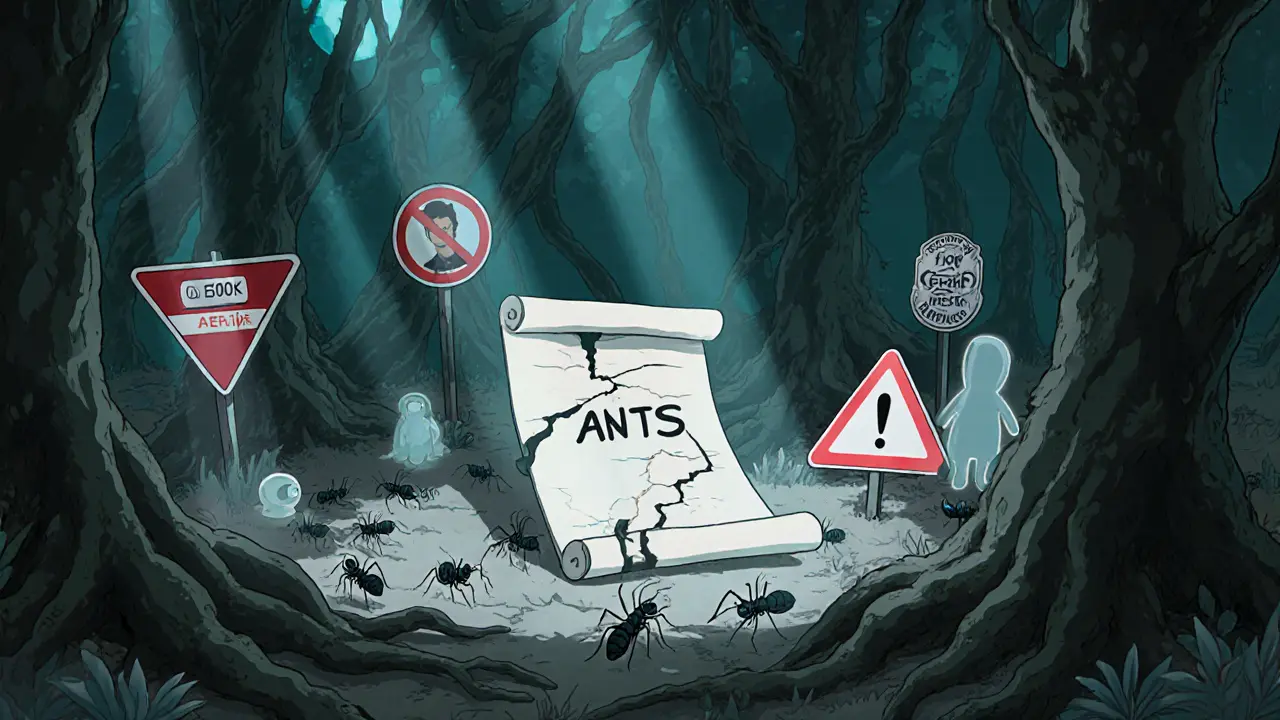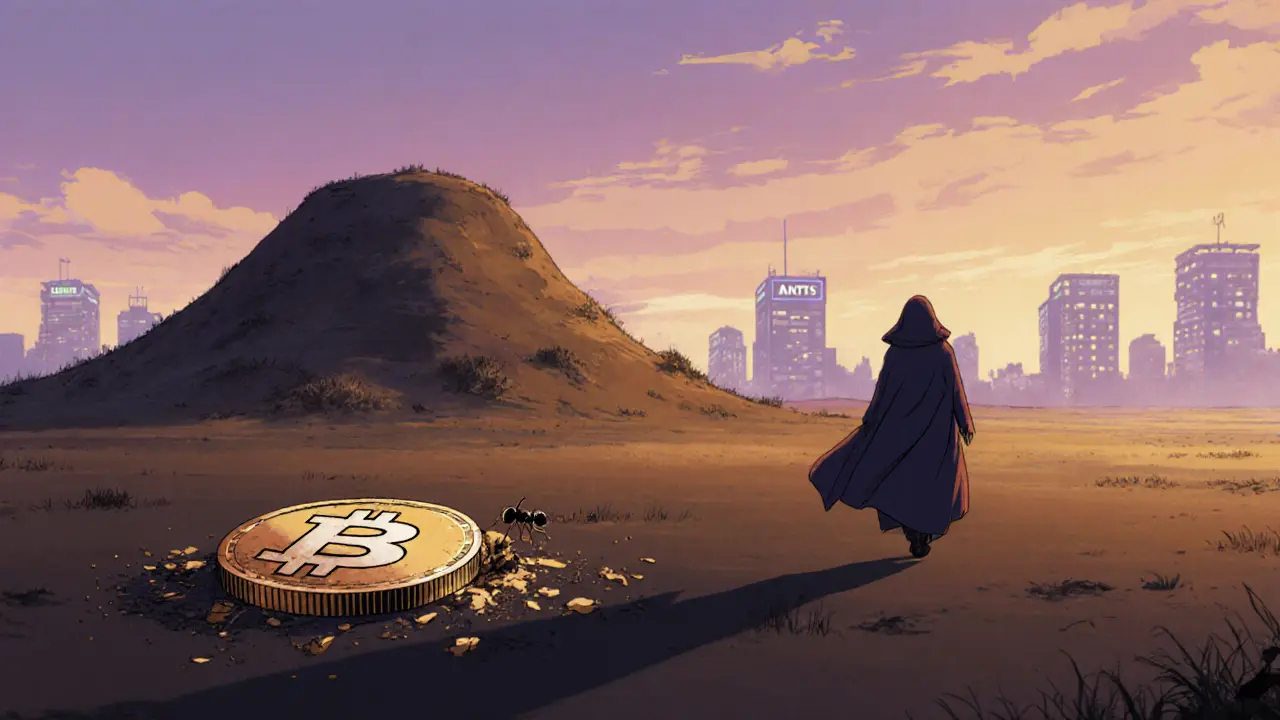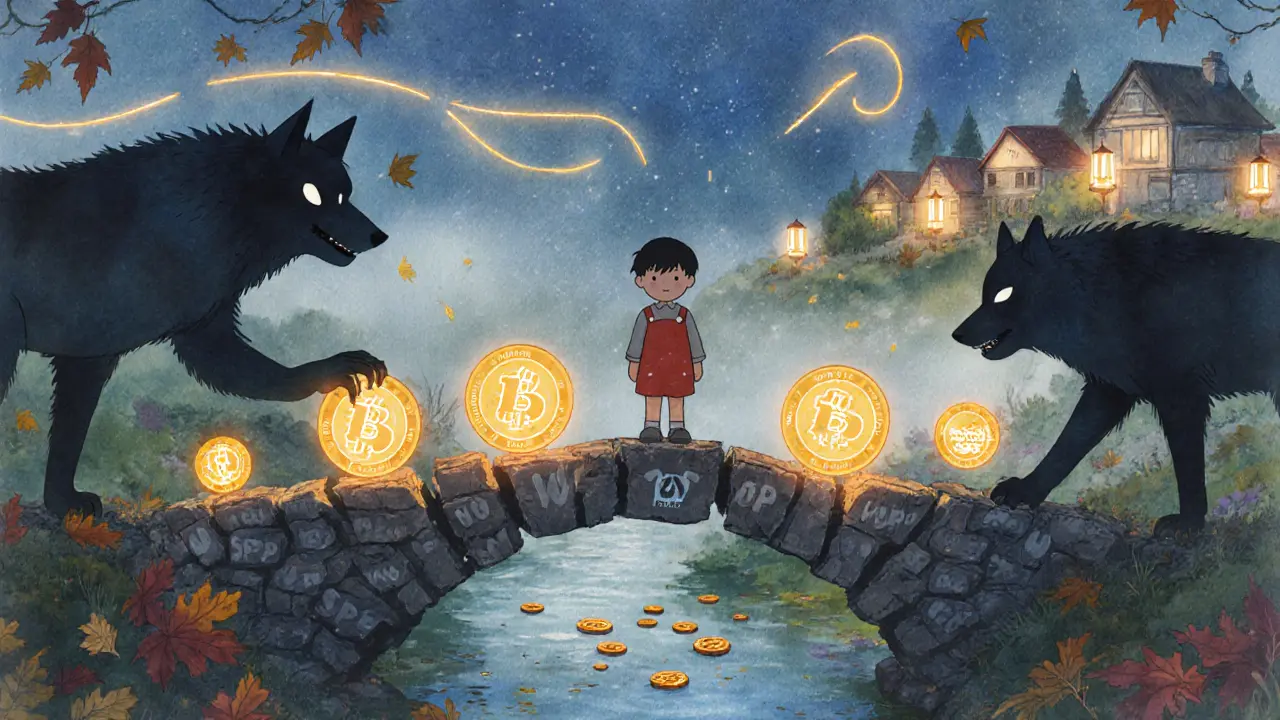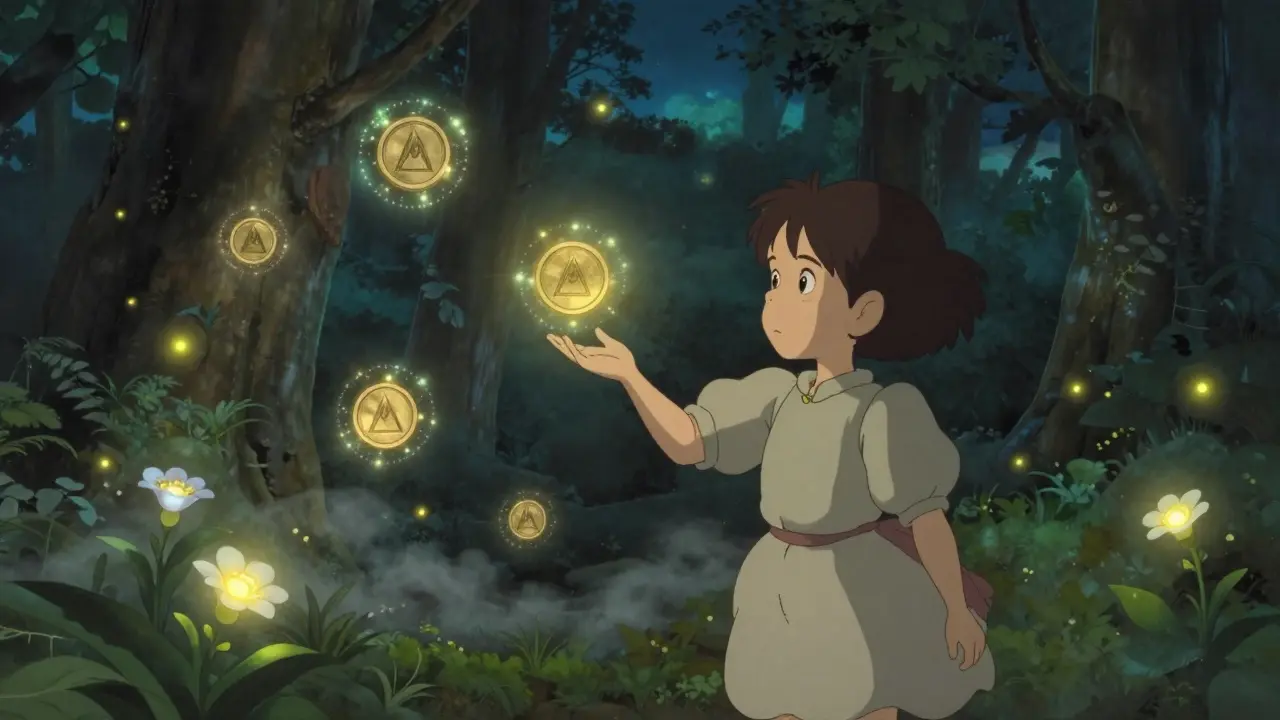Crypto Token Risk Calculator
Use this tool to assess the risk level of cryptocurrency tokens based on the key factors highlighted in our analysis of ANTSCOIN. High risk scores indicate potential scams or poor investment opportunities.
Risk Assessment Results
Quick take: why ANTSCOIN matters (or doesn’t)
If you’ve been scrolling through obscure token lists you’ll probably see ANTSCOIN (ticker ANTS) and wonder whether it’s a hidden gem or a trap. The short answer: it’s a micro‑cap token with almost no market activity, no public roadmap, and a risk profile that reads like a warning sign for scammers.
What is ANTSCOIN (ANTS)?
ANTSCOIN (ANTS) is a low‑priced cryptocurrency that markets itself as “ANT COLONY.” It has no clear blockchain declaration, no whitepaper, and no officially recognized development team. The token appears sporadically on a handful of decentralized exchanges, but the listings provide virtually no liquidity.
Current market snapshot (July 2024 data)
Market aggregators paint a bleak picture. According to CoinMarketCap on 26 July 2024, ANTSCOIN traded at $0.00001828 USD with a 24‑hour volume reported as $0 - effectively zero. CoinGecko listed a price of $0.00001409 and a tiny $53.63 volume, a 5.45 % rise that is meaningless when the base numbers are so small. LiveCoinWatch ranked the token at #14,978 by market cap, noting a daily high of $0.000001 before the data turned “null.” These inconsistencies signal a lack of reliable market data, a common trait of tokens that hover near the bottom of the ecosystem.
Technical details - or the lack of them
Most legitimate projects publish the blockchain they run on (Ethereum, Solana, BNB Smart Chain, etc.), tokenomics, and audit reports. ANTSCOIN offers none of this. Some sources mistakenly associate a similarly named “ANT” token with Solana, but that is a different asset entirely. No contract address is officially listed on major block explorers, and there are no audit certificates from firms like CertiK, which means the smart contract (if it exists) could contain hidden functions or back‑doors. The token is also absent from popular wallet integrations such as MetaMask or Trust Wallet, forcing users to manually add a contract address-an operation that carries significant security risk.
Ecosystem and utility - what can you actually do with ANTS?
Unlike projects such as Kingdom of Ants (ANTC), which run gamified DeFi features, ANTSCOIN shows no on‑chain activity beyond a static liquidity pool that has long since dried up. There are no staking programs, yield‑bearing NFTs, governance mechanisms, or partnership announcements. In practice, the token provides no functional benefit beyond speculative price movement.
Red flags and risk factors
Several industry‑wide analyses highlight why ANTSCOIN sits in the highest‑risk category:
- Zero verified developers or social media presence - no Telegram, Discord, or GitHub activity.
- Near‑zero trading volume - price swings can be triggered by a single trade.
- Absence of a whitepaper or roadmap - investors cannot assess future plans.
- Multiple “null” data points across aggregators - a sign of illiquid or potentially delisted tokens.
- Frequent mention in scam alerts. The crypto‑security firm CertiK flagged “unverified contract deployment” as a high‑severity risk for tokens lacking audit coverage.
In a July 2024 Substack newsletter, Dr. David Gerard warned that tokens trading below $0.0001 with almost no volume are “prone to rug pulls and often indistinguishable from deliberate scams.” Indeed, Chainalysis identified tokens with similar characteristics as comprising 92 % of documented rug‑pull schemes in their 2023 report.

Regulatory outlook
The U.S. SEC’s July 2024 enforcement update specifically targeted tokens that lack identifiable utility or a development team, invoking an expanded Howey Test. While ANTSCOIN has not been formally named in an SEC action, its profile matches the criteria that regulators are increasingly scrutinizing. Investors could face legal uncertainty if the token is deemed a securities violation.
Comparative snapshot: ANTSCOIN vs. other “ant” tokens
| Feature | ANTSCOIN (ANTS) | Kingdom of Ants (ANTC) | ANT (Mars‑themed meme) |
|---|---|---|---|
| Blockchain | Unclear / Not documented | Solana | Solana |
| Market cap (July 2024) | ~$0 (near‑zero) | $~12 M | $200 K (fully‑diluted) |
| 24‑h volume | $0‑$53 | $200‑$500 K | $5‑$6 |
| Utility | None documented | Yield‑bearing NFTs, staking, AI‑driven games | Mars meme narrative, community contests |
| Audit | No public audit | Audited by CertiK (2023) | Audited by PeckShield (2024) |
The table makes it clear that ANTSCOIN offers none of the functional or security features that its namesakes provide. If you’re looking for an “ant” token with a real product, the alternatives are far safer bets.
What should you do if you encounter ANTSCOIN?
- Do not invest. The combination of zero liquidity, missing documentation, and regulatory red flags makes any purchase extremely risky.
- If you already own a few tokens from an obscure exchange, consider moving them to a personal wallet where you control the private key, but be aware that you may never be able to sell them.
- Monitor official exchange announcements. Should a reputable exchange list ANTSCOIN with a proper contract address and audit, reassess the risk-but such a scenario is unlikely.
- Report suspicious activity to crypto‑security platforms like Nansen or Delphi Digital, which track micro‑cap token health.
In short, treat ANTSCOIN as a cautionary example of the “sh*tcoin” phenomenon rather than a viable investment.
Future outlook
Analysts from Delphi Digital assigned ANTSCOIN a “Category D” rating, projecting a 98 % chance of becoming worthless within 18 months. Nansen’s “Zombie Assets” report (June 2024) placed the token in a bucket with “zero holder growth and declining exchange liquidity.” Academic research from UC Berkeley’s Blockchain Lab found that tokens with sub‑$0.0001 price points and no activity have a 1.7 % survival rate beyond two years. The consensus is clear: unless a sudden, credible development effort emerges, ANTSCOIN is likely to fade into obscurity.
Bottom line
ANTSCOIN (ANTS) is a micro‑cap token that lacks technical specs, community support, and any real use case. Its market data is riddled with null values, its risk profile mirrors known scam patterns, and regulatory bodies view it with suspicion. For anyone navigating the crypto space in 2025, the safest move is to avoid ANTSCOIN altogether and focus on assets with transparent roadmaps, audited code, and active ecosystems.

Is ANTSCOIN listed on any major exchange?
No. The token only appears on a few low‑volume DEXs, and none of the major centralized exchanges (Binance, Coinbase, Kraken) have ever listed it.
Can I store ANTSCOIN in MetaMask?
Technically you could add a custom contract address, but because the official address is not publicly verified, doing so carries a high risk of losing funds.
What red flags should I look for with micro‑cap tokens?
Key warning signs include: no whitepaper, zero developer activity, negligible trading volume, missing audit reports, and frequent mentions in scam alerts from firms like Chainalysis or CertiK.
Is there any legitimate use case for ANTSCOIN?
Currently there is none. The token does not power any dApp, game, or DeFi protocol, making its utility effectively nonexistent.
Should I sell ANTSCOIN if I already hold it?
If you can find a buyer on the DEX where it’s listed, selling might limit further loss. However, be prepared for a huge price impact due to the token’s illiquidity.








Joseph Eckelkamp
October 24, 2025 AT 08:00Ah, the wonderful world of micro‑cap tokens, where the hype is louder than the code; where every “new project” seems to promise the moon while delivering a ghost. You read the whitepaper-oh wait, there isn’t one-so you start to wonder if the developers are hidden behind a veil of anonymity for good reason. The absence of audit reports is not just a red flag; it's a neon billboard shouting “invest at your own peril”. Liquidity that hovers around zero is the financial equivalent of a desert oasis that evaporates the moment you approach. A token that only appears on obscure DEXs is like a pop‑up shop that never opens its doors. The fact that the contract address isn’t verified is a classic symptom of a potential rug pull waiting to happen. Even seasoned analysts have flagged this pattern as a hallmark of scams that have plagued the market for years. If you’re looking for a legitimate use case, you’ll find none-no staking, no NFTs, no governance, just a price that can be moved by a single trade. The SEC’s recent enforcement focus on unidentifiable tokens adds another layer of regulatory risk that most casual investors overlook. In short, the token’s profile reads like a checklist for doom: zero developers, zero volume, zero roadmap, and a mountain of uncertainty. It’s the perfect example of why due diligence matters more than hype. So, before you throw any crypto into this black hole, ask yourself if you enjoy watching your money disappear into thin air. Spoiler: you probably don’t. Remember, the crypto market is unforgiving to those who chase glitter without substance. Let this be a cautionary tale for anyone tempted by the siren song of a $0.00001 token.
adam pop
October 25, 2025 AT 11:46The lack of a verified contract makes me wonder who’s really pulling the strings behind the curtain.
Dimitri Breiner
October 26, 2025 AT 14:33Looking at the data, it’s clear that the token’s volume is essentially nonexistent, which makes any price movement highly speculative. Without a roadmap or development team, there’s no reason to expect future growth. If you’re considering an investment, treat this as a high‑risk gamble rather than a strategic play. Focus on assets with transparent governance and real utility. That’s the only way to protect your capital in a volatile market.
angela sastre
October 27, 2025 AT 18:20Exactly, the community aspect is missing, and that’s a big part of why projects succeed. You need active developers and a lively Discord to keep things moving.
Jennifer Rosada
October 28, 2025 AT 22:06From an ethical standpoint, endorsing a token devoid of verifiable documentation contravenes the principles of responsible investment. Investors are entitled to full disclosure, and in this case such transparency is conspicuously absent. Accordingly, participation would be tantamount to speculation predicated on misinformation, which is indefensible.
Prabhleen Bhatti
October 30, 2025 AT 01:53Indeed, the token's tokenomics are opaque-there is no clarity on supply caps, inflation rates, or vesting schedules; such parameters are fundamental to any robust crypto‑economics model. Moreover, the absence of an audit amplifies systemic risk, especially given the prevalence of re‑entrancy vulnerabilities in unverified contracts. In the broader macro‑financial context, allocating capital to assets with such indeterminate fundamentals could adversely affect portfolio diversification metrics.
John E Owren
October 31, 2025 AT 05:40It’s understandable to feel drawn to low‑price tokens, but remember to balance curiosity with caution. Keep your exposure minimal until you see concrete developments.
LeAnn Dolly-Powell
November 1, 2025 AT 09:26Stay safe and avoid the hype! 😊
Anastasia Alamanou
November 2, 2025 AT 13:13The data presented points to a clear lack of infrastructure and community support, which are essential components for sustainable growth in the crypto ecosystem.
Rohit Sreenath
November 3, 2025 AT 17:00When the foundation is missing, the edifice cannot stand; thus, investing here is a lesson in the impermanence of value without substance.
Sam Kessler
November 4, 2025 AT 20:46One must consider that such tokens often serve as conduits for orchestrated market manipulation, designed by those with vested interests to siphon capital from the uninformed masses.
Steve Roberts
November 6, 2025 AT 00:33While the majority dismisses it outright, there’s a remote possibility that a hidden development team could emerge and breathe life into the project, albeit the odds remain exceedingly slim.